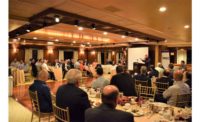After 25 years, this will be my final contribution to Engineered Systems’ Commissioning column. It has been an amazing journey tracking and documenting commissioning’s evolution from a niche service offering to a process familiar to almost everyone in the design and construction industry. Its application to existing buildings has grown in parallel, greatly expanding commissioning’s influence on building system performance and sustainable operation.
In the 1990s, I worked with a handful of other building systems commissioning pioneers to share the benefits of commissioning and define the best value process for third-party commissioning of design and construction projects. The public utility industry, focusing primarily on the energy conservation benefits of commissioning, jumped in with both feet to support the concept. This support was a main driver for the first National Conference on Building Commissioning in 1993 and, in 1998, the founding of the Building Commissioning Association (BCxA).
In the intervening years, great strides have been made toward commissioning becoming “business as usual” for design and construction projects. Commissioning certainly isn’t part of every project, but many design engineers and contractors have participated in at least one commissioned project. Multiple organizations, including the BCxA, of course, have created their own commissioning programs to help standardize the process, train and certify practitioners, develop tools, and educate building owners.
The commissioning industry has now reached a level of maturity where the next generation of leaders needs to focus on consistent application of the standards, maintaining high bars for certification and, to the extent necessary, expanding commissioning’s reach to include new building systems focused on decarbonization as well as the historic focus on energy conservation.
In addition, there is a relatively large contingent of building owners who want the benefits of commissioning without necessarily putting in the work required of them to make the process as valuable to their organizations and their buildings as it could be. Reaching building owners’ decision-makers has been an ongoing challenge for all commissioning associations. Owners can be one of the major barriers to taking commissioning beyond a rout set of checklists and documentation to a meaningful process for verifying and sustaining optimal building systems performance that benefits the triple bottom line (profit/people/planet).
With all of that work still ahead of us, I (and my fellow pioneers, I’m sure) am more than happy to pass the torch to the next generation of commissioning leaders. I will always have something to say, of course, but I’d like more time to indulge my passion in hands-on work, particularly in existing buildings where the needs are so great.
Starting in January 2023, Miles Ryan, P.E., will write this column. He is a commissioning engineer at Questions & Solutions Engineering (QSE), and he and I have worked together for over four years. He holds a bachelor’s degree in mechanical engineering from Montana State University and a master’s degree in architectural engineering from the University of Colorado Boulder.
Prior to joining QSE, he was active duty in the Air Force, serving as a civil engineering officer. He held various roles overseeing the design, construction, and operation of facility mechanical systems at Grand Forks AFB, North Dakota, and then, in 2015, he became a mechanical systems instructor at the Air Force Institute of Technology (AFIT). Since leaving active duty in 2018, he has remained on faculty at AFIT as an Air Force Reservist to continue teaching courses in HVAC control systems as well as HVAC design and analysis.
I know you will enjoy reading his monthly contributions to Engineered Systems magazine. He has a passion for all things commissioning and is a gifted instructor and communicator. The more technically difficult the problem, the more he enjoys tackling it and then teaching others what he learned along the way. His articles will not shy away from breaking down the most technical of nuances plaguing facility systems.
Thank you to Engineered Systems and all of its readers for providing this unparalleled platform to help spread the word about the commissioning process, benefits, and best practices.









